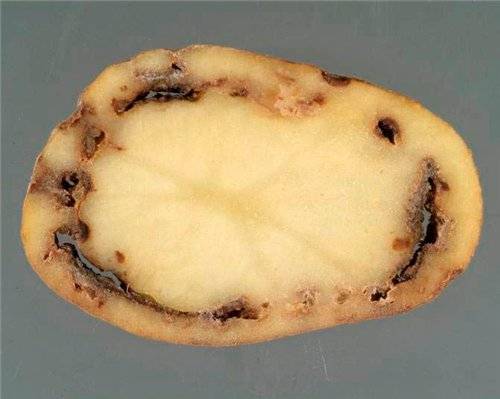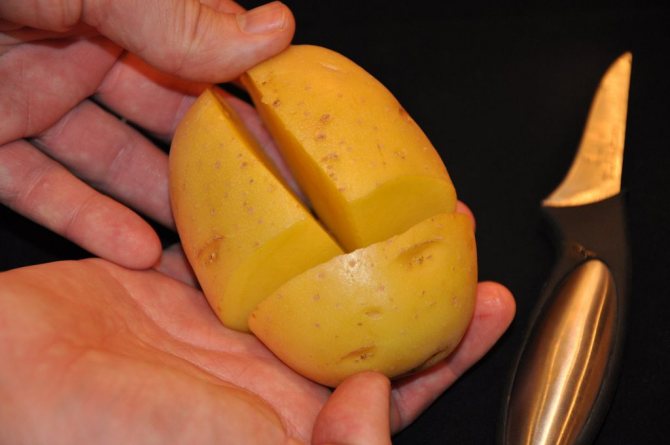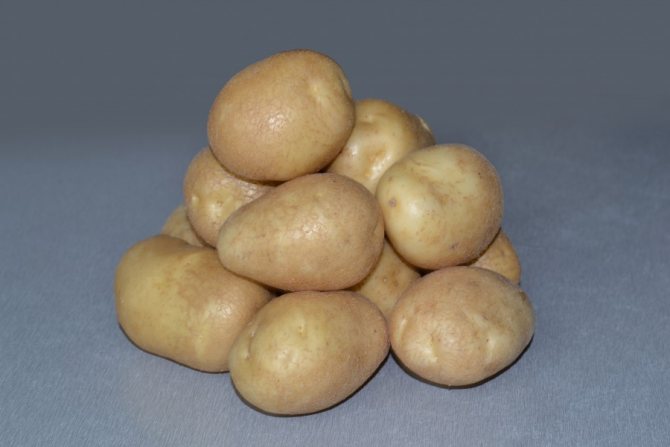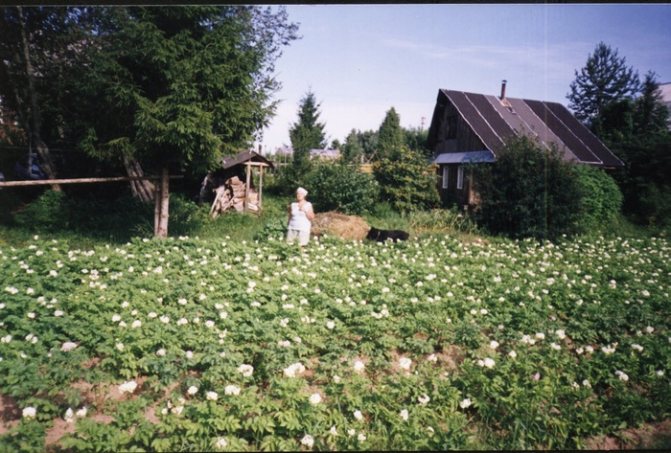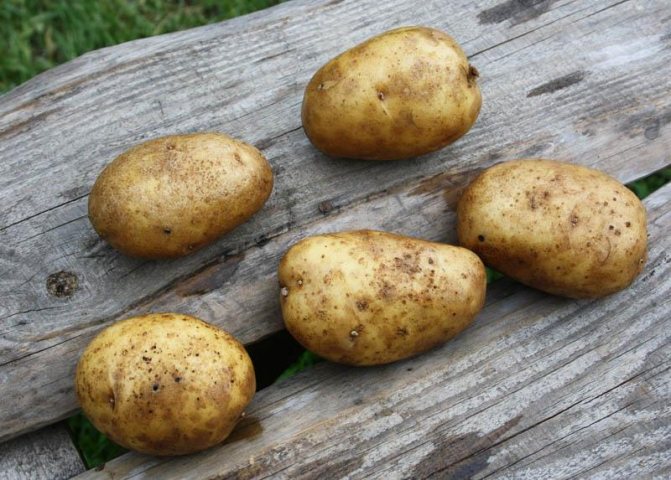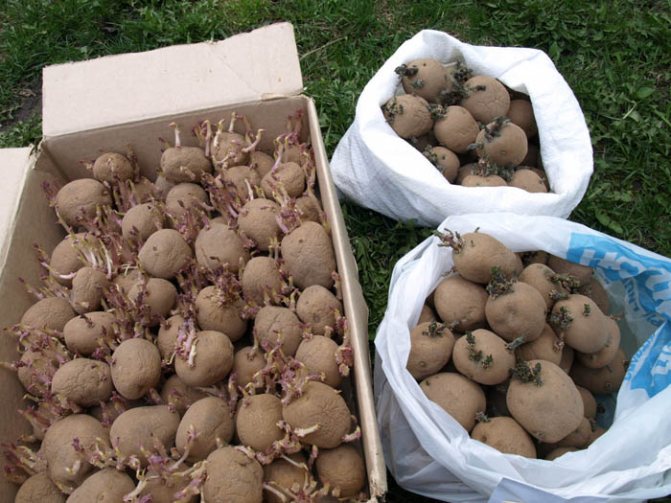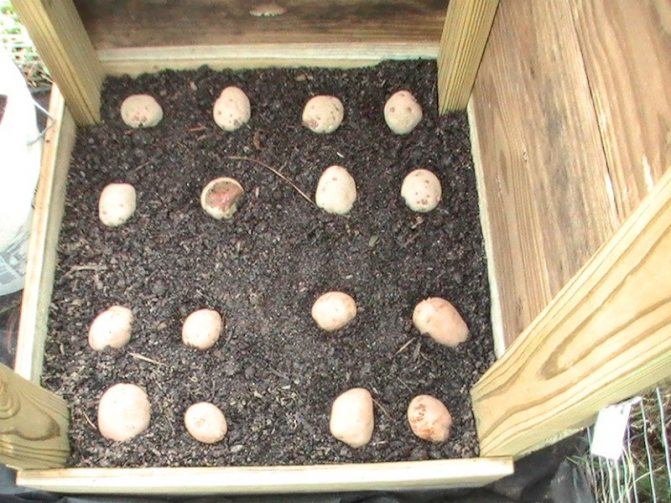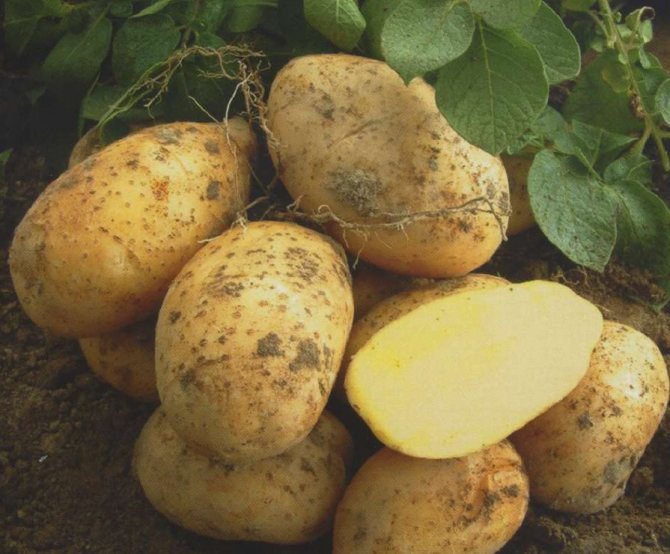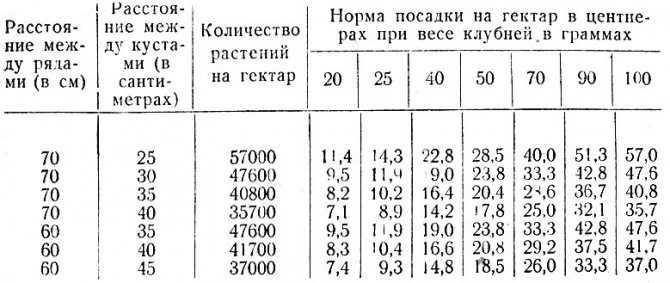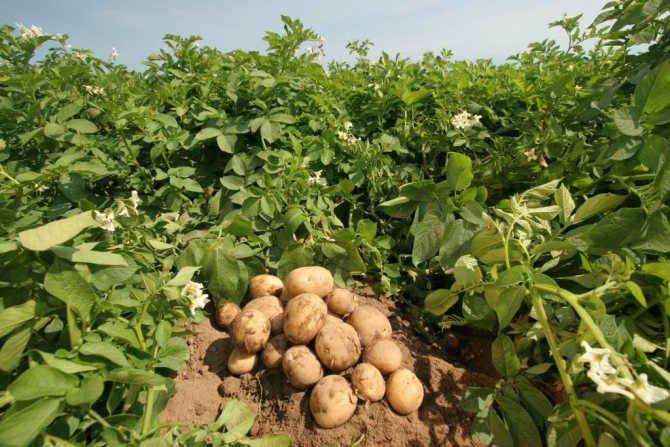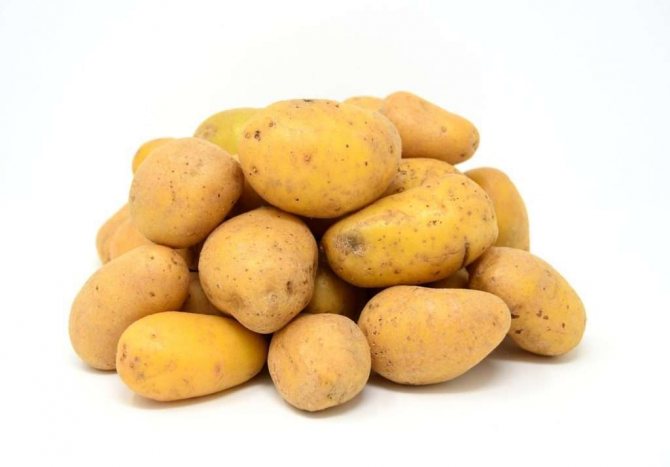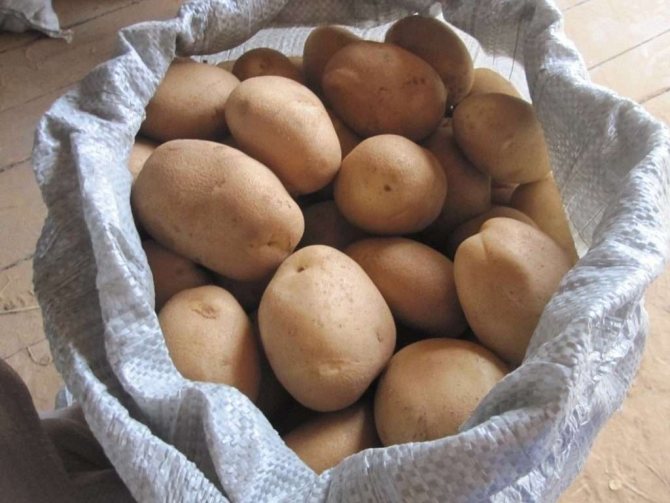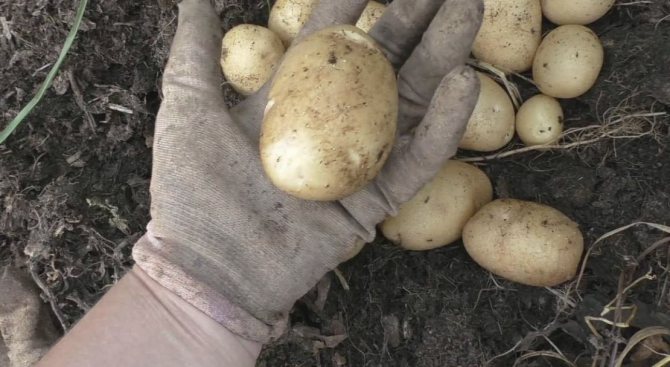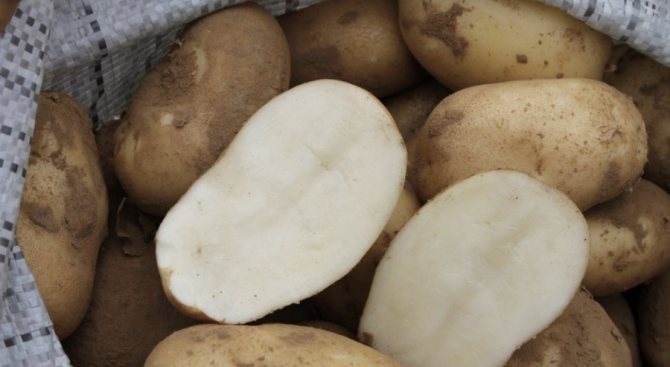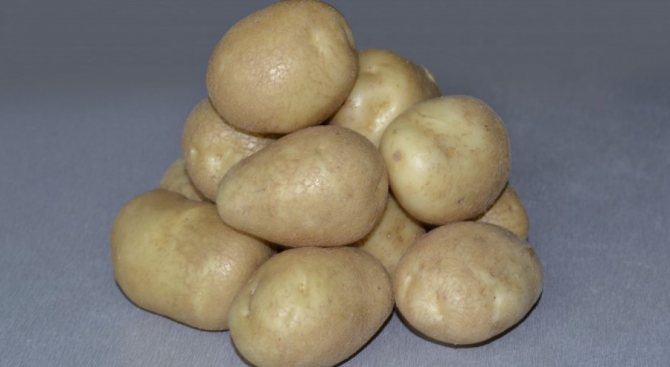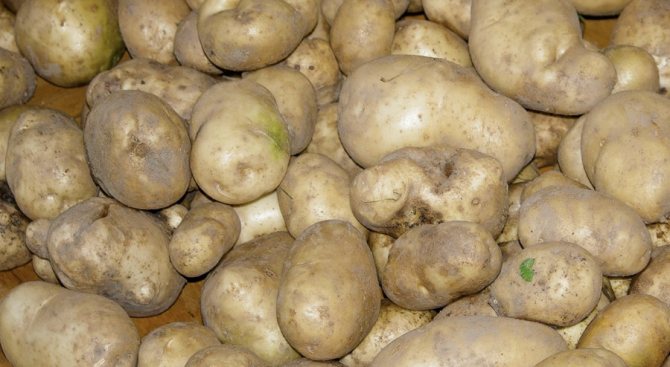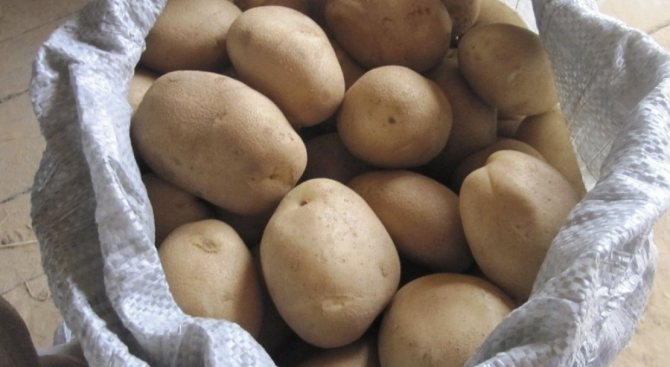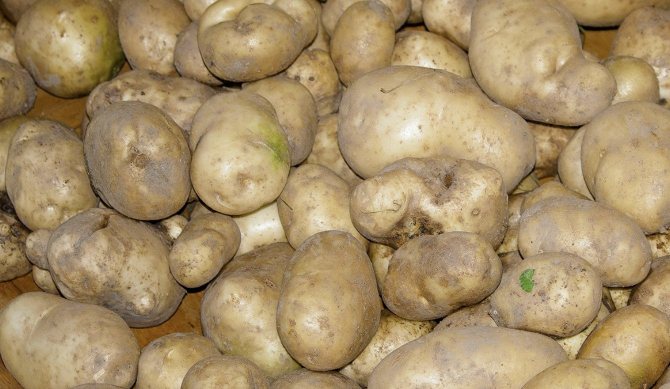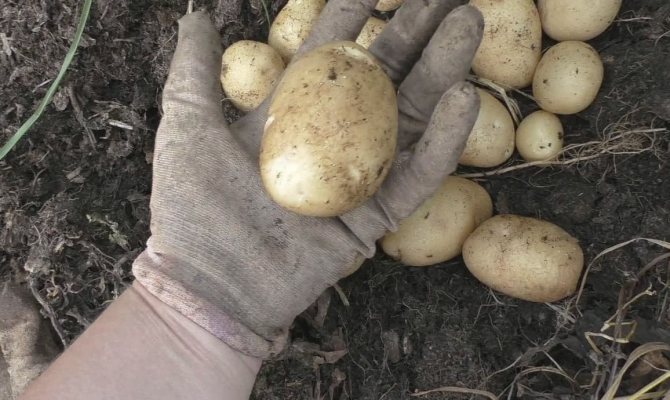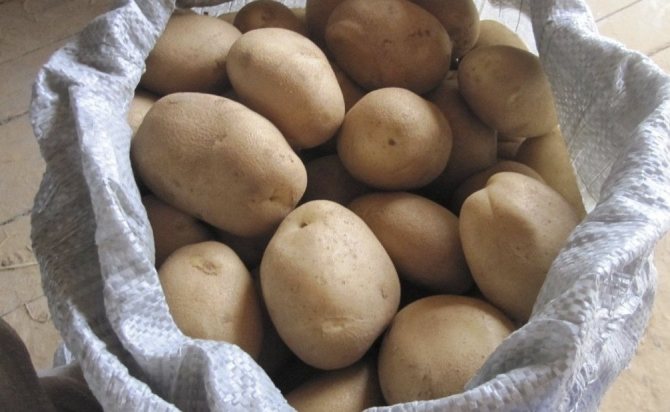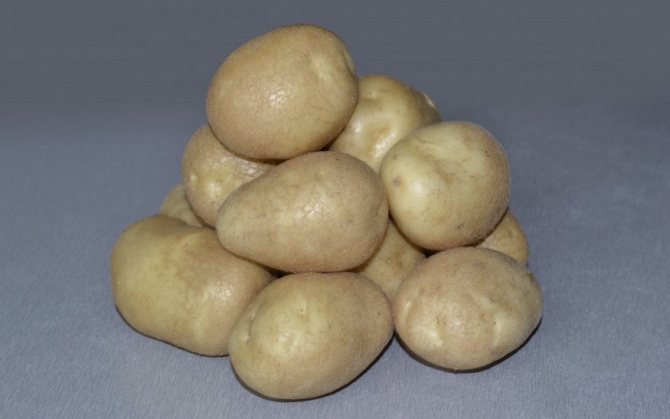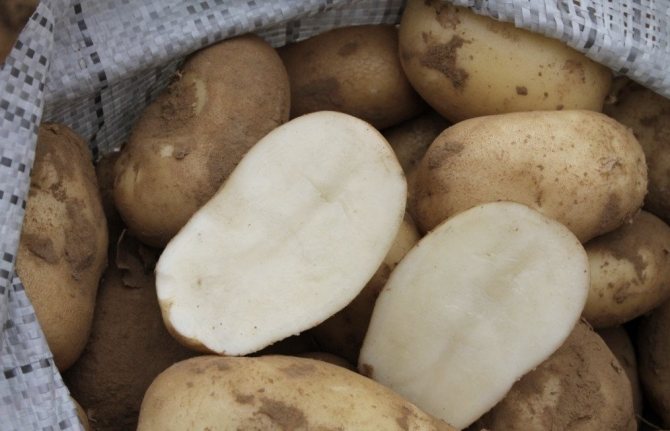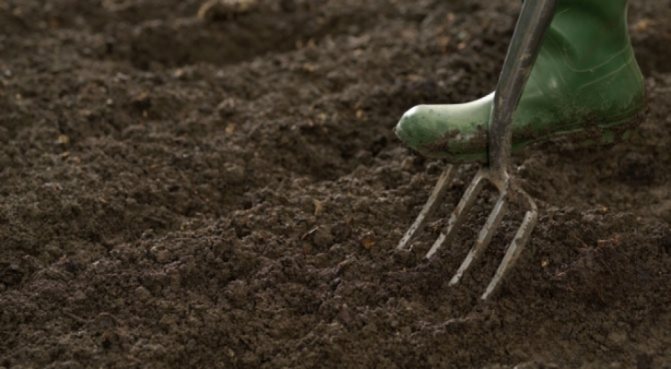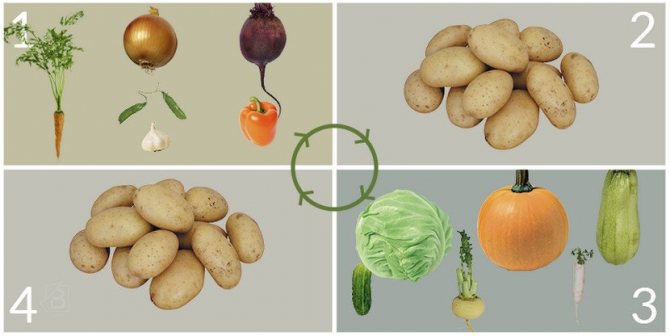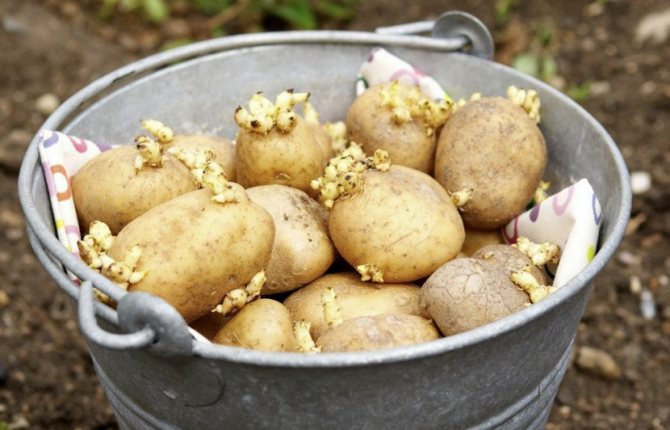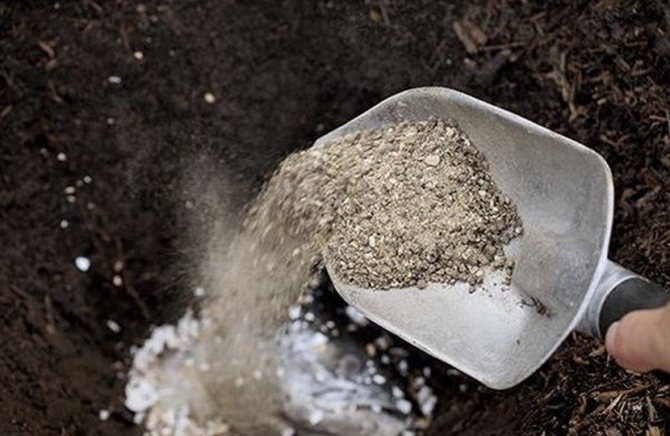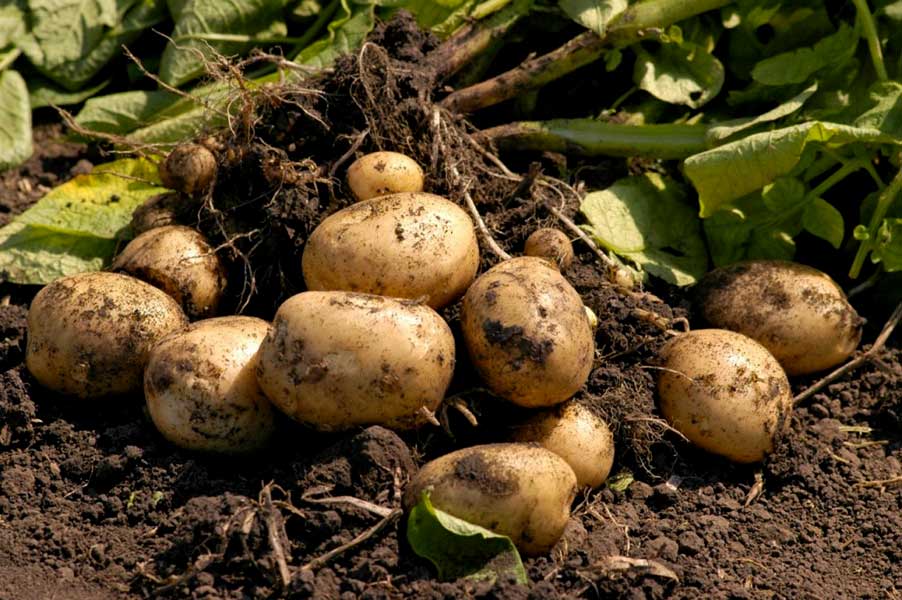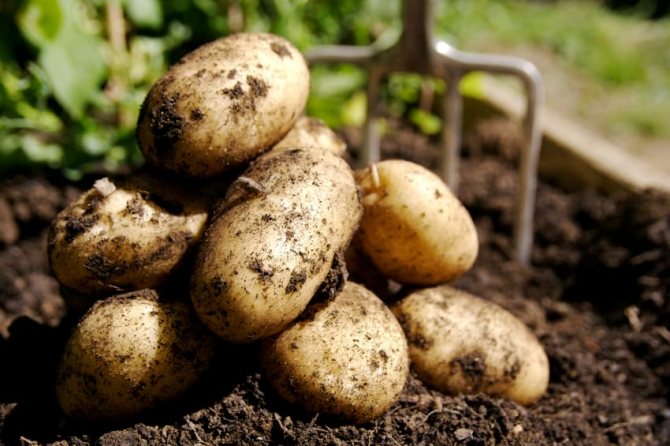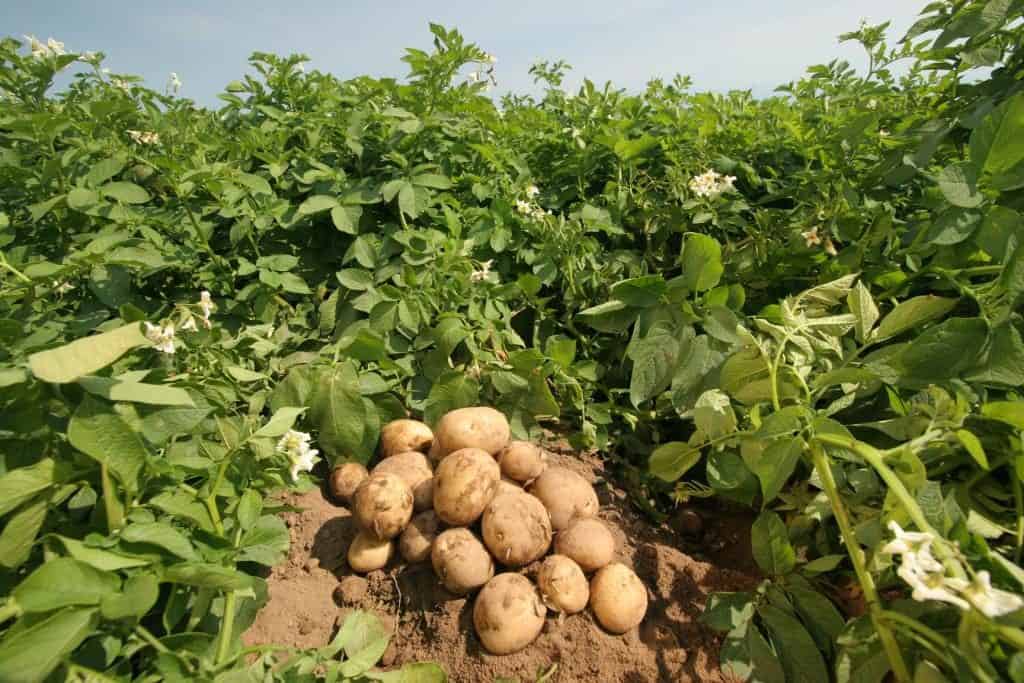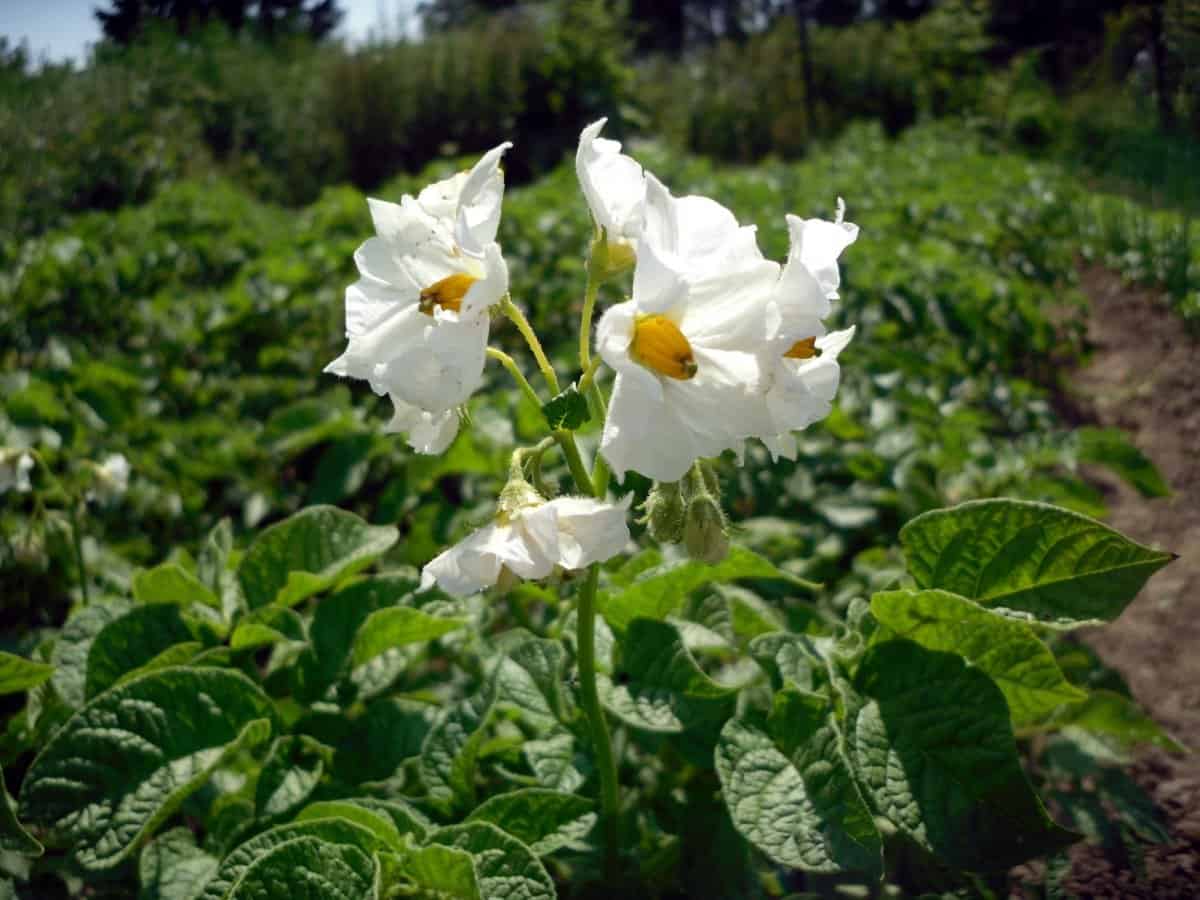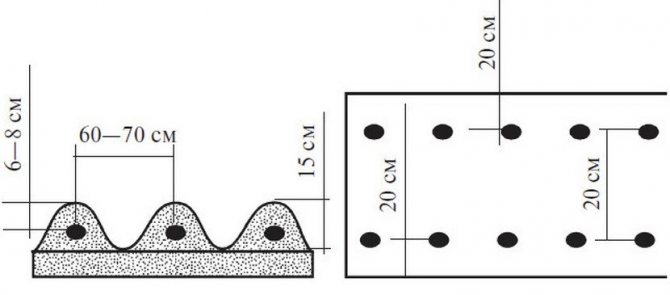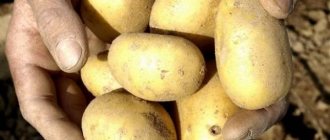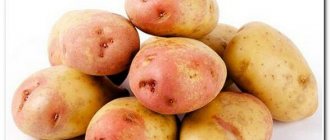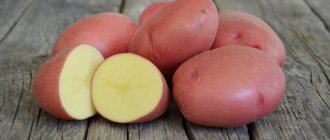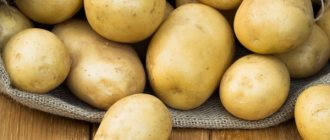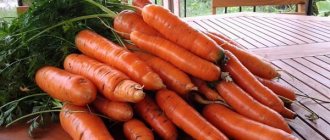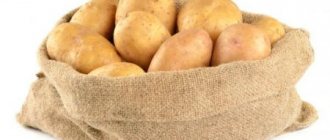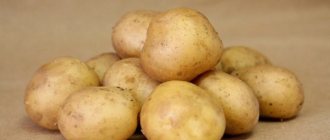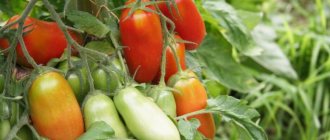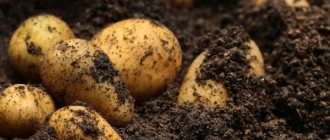Among domestic varieties of potatoes, Luck can rightfully be called one of the best. He is more often than others chosen for growing by summer residents, and for most gardeners he is a favorite. This potato also never stays on the market, has a stable demand from the buyer, despite the large assortment of other varieties and hybrids. What are its advantages, and why is Luck potatoes so valued?
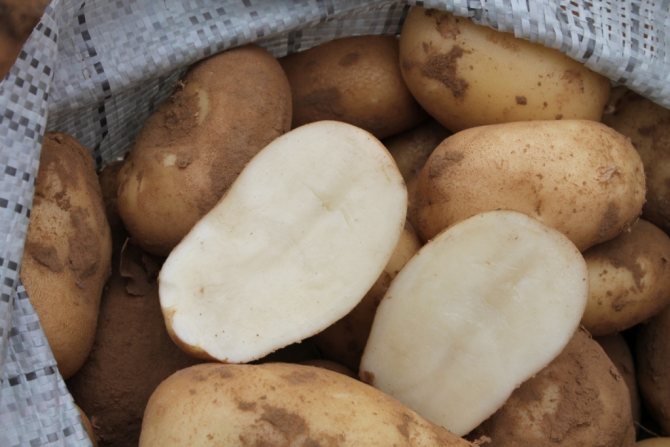
Early Potato Luck
Potatoes "Good luck": variety description, photos and reviews
Potatoes "Good luck" - a representative of the gold fund of domestic selection. The variety was included in the State Register in 1994, bred and patented by the FSBSI "All-Russian Research Institute of Potato Farming. AG Lorkha "(p / o Kraskovo, Moscow region) with the participation of 70 enterprises of the agricultural sector of Russia, who acted as originators. Among them are the Moscow Agricultural Academy. K. A. Timiryazeva (Moscow), Federal State Budgetary Scientific Institution "North Caucasian Federal Scientific Agrarian Center" (Stavropol Territory), agro (Tyumen region), Federal State Unitary Enterprise OPKh "Udarnik" (Republic of Chuvashia) and many others.
The Udacha variety is distinguished by its ecological plasticity, zoned for various agro-climatic conditions, is in demand by a wide range of consumers and is popular with professional vegetable growers in Russia and the countries of the former USSR. The variety is intended for personal and commercial production, it is recommended for cultivation in the North-West, Central, Volgo-Vyatka, Central Black Earth, North Caucasus, Middle Volga, Ural and Far Eastern regions.
Let's summarize the main characteristics of the variety in the table:
The variety is suitable for summer-autumn consumption and storage, belongs to the early ones (the growing season from germination to technical ripeness is 65-80 days). Due to the intensive filling of tubers, products of commercial quality are obtained after the 45th day.
Bushes of medium height, semi-spreading, with a voluminous aerial part. The tops are powerful, the stems are quite resistant to lodging, densely covered with dark green leaves. Matte leaf with large lobes. The inflorescences consist of several medium-sized flowers with snow-white corollas. Flower petals (sepals) are noticeably bent downwards. After an abundant short flowering, berries with seeds are formed on the plants. The light sprout has a spherical shape and a red-violet color at the base.
Tuber characteristics
Commercial quality tubers are quite large: they gain weight 120-250 g; generally oval (short) or rounded in shape.
The tubers are fairly even with a few small and shallow eyes, clearly visible due to their dark (brown, grayish or reddish) color. The peel is smooth, slightly reticulate, thin, which provides a small amount of waste during mechanical cleaning. The skin color ranges from light cream or yellowish to beige. The pulp of raw tubers is white; during heat treatment it acquires a slight yellowness, does not boil over. In tubers at the stage of bundle (milk) ripeness, the flesh is very tender, in mature tubers it is dense, slightly mealy, watery.
After boiling, the tubers remain intact, cut well. Potatoes "Luck" are classified as type A / B according to their digestibility characteristics.
The starch content is low - 12-14%.The variety is considered universal for its culinary purpose: it is suitable for making salads, mashed potatoes, boiling peeled and in a peel ("in uniform"), baking, frying, stewing.
The advantages of this variety of tubers include:
- resistance to mechanical damage, such as shock, and subsequent bluing of the pulp;
- high marketability of appearance - 85-96% of the total harvest;
- possibility of transportation and storage without loss of external and taste qualities.
The safety factor is 88-97%. The dormant period for tubers of the Udacha variety has an average duration: 159-197 days (from 1 to 5 points on a 9-point scale).
The duration of the dormant period of tubers depends on the density of the soil and weather factors (amount of precipitation, air and soil temperatures at a depth of 10-15 cm) during the growing season, as well as on storage conditions (temperature and humidity). The variety is characterized by cold resistance, tubers are ready for active germination at +10 ℃.
Yield
The variety is characterized by stable yield indicators: an average of 420-430 c / ha.
Important in the description of the potato variety "Luck" is that according to the results of field tests, its maximum yield is 450-500 c / ha, while the marketable yield of early production after the first digging on the 45th day of the growing season reaches 180-200 c / ha. Up to 1.5-2 kg of tubers are obtained from each bush. The yield of the variety practically does not depend on the type of soil and is stable under adverse conditions (heat, drought, waterlogging).
Sustainability
Potatoes of the "Luck" variety are quite resistant to common diseases:
The disadvantages of the variety include its susceptibility to nematodes (pale and golden cyst-forming), fungal infections of the tops (Alternaria and late blight), as well as susceptibility to pest attacks.
Growing features
Since the variety has been cultivated for a long time, the planting material for many gardeners has a high degree of degeneration, suffers from a strong infection with viral diseases and bacterial rot. The following video will tell about the improvement of the variety and the production of high-quality seed potatoes:
For planting potatoes, it is recommended to set aside areas where legumes or green manures previously grew, enriching the soil with nitrogen and inhibiting the growth of weeds (phacelia, lupine, mustard, spring rape, etc.).
When planting, potatoes should not be alternated with other nightshade crops (tomato, eggplant, pepper), as they are prone to a number of common diseases.
Seed material needs to be preheated after being removed from cold storage. It is taken out in advance in a warm room or laid out for 2-3 days under sunlight. Otherwise, germination will be delayed, which will lead to a delay in the formation of the crop. Sprouted tubers are planted in late April - mid-May. The main indicator for choosing the optimal planting time is the soil temperature, which should be at least 6-8 ℃.
According to reviews, the potato "Luck" responds well to moderate watering in the aisles and the introduction of complex (nitrogen-phosphorus-potassium) mineral or organic fertilizers.
Denis, 42 years old, Magadan
To indulge in early young potatoes of the Udacha variety, we pre-germinate the tubers in greenhouses. We plant seed potatoes in boxes filled with sawdust, water them abundantly and leave them in a warm, bright room. Formed seedlings at the age of 2 weeks are planted in open ground. To protect against spring frosts on the soil, we cover the seedlings with foil at first.
Read also: Plant Lakonos (Fitolakk)
Natalia, 36 years old, Republic of Mordovia
Despite the popularity of the Luck variety, the taste of this potato is mediocre.It seems that it has completely degenerated in our country: the harvest is small, it is not stored for long, it does not even last until the new year. Next year we plan to plant the Favorite variety, which seems to be the same Luck, but improved.
Igor, 51 years old, Pskov
We try to renew all varieties of potatoes that we grow every 3 years. With our beloved Luck, the main difficulty now is to find quality planting material. If you order on the Internet, the shipping costs more than the potatoes themselves! We like it very much to taste - it is white, does not boil over, not soapy and not very sticky. Great for frying and other types of cooking.
The yield and presentation of tubers of the "Luck" variety can be assessed by watching the following video:
For several years she worked as a TV program editor with leading producers of ornamental plants in Ukraine. At the dacha, of all types of agricultural work, he prefers harvesting, but for the sake of this she is ready to regularly weed, pick, pinch, water, tie, thin out, etc. I am convinced that the most delicious vegetables and fruits are grown by your own hands!
Found a bug? Select the text with the mouse and click:
It is necessary to collect medicinal flowers and inflorescences at the very beginning of the flowering period, when the content of nutrients in them is as high as possible. Flowers are supposed to be picked with hands, breaking off rough pedicels. The collected flowers and herbs are dried, scattered in a thin layer, in a cool room at a natural temperature without access to direct sunlight.
In small Denmark, any piece of land is a very expensive pleasure. Therefore, local gardeners have adapted to growing fresh vegetables in buckets, large bags, foam boxes filled with a special earthen mixture. Such agrotechnical methods allow you to get a harvest even at home.
One of the most convenient methods to prepare a grown crop of vegetables, fruits and berries is freezing. Some people believe that freezing leads to a loss of the nutritional and beneficial properties of plant foods. As a result of the research, scientists have found that there is practically no decrease in nutritional value when frozen.
Both humus and compost are rightfully the basis of organic farming. Their presence in the soil significantly increases the yield and improves the taste of vegetables and fruits. They are very similar in properties and appearance, but they should not be confused. Humus - rotted manure or bird droppings. Compost - rotted organic residues of various origins (spoiled food from the kitchen, tops, weeds, thin twigs). Humus is considered a better fertilizer, compost is more readily available.
"Frost-resistant" varieties of garden strawberries (more often simply - "strawberries") also need shelter, as well as ordinary varieties (especially in those regions where there are snowless winters or frosts alternating with thaws). All strawberries have shallow roots. This means that without shelter, they freeze out. Assurances of sellers that strawberries are "frost-hardy", "winter-hardy", "endure frosts down to -35 ℃", etc., is a deception. Gardeners should remember that the root system of strawberries has never been changed.
Natural toxins are found in many plants; those that are grown in gardens and orchards are no exception. So, in the seeds of apples, apricots, peaches there is hydrocyanic (hydrocyanic) acid, and in the tops and peels of unripe nightshades (potatoes, eggplants, tomatoes) - solanine. But do not be afraid: their number is too small.
Tomatoes have no natural protection against late blight. If late blight attacks, any tomatoes (and potatoes too) die, no matter what is said in the description of varieties ("varieties resistant to late blight" is just a marketing ploy).
Compost - rotted organic residues of various origins.How to do it? Everything is stacked in a heap, a hole or a large box: kitchen leftovers, tops of garden crops, weeds mown before flowering, thin twigs. All this is interlayered with phosphate rock, sometimes with straw, earth or peat. (Some summer residents add special composting accelerators.) Cover with foil. In the process of overheating, the pile is periodically ted up or pierced for the flow of fresh air. Usually compost “matures” for 2 years, but with modern additives it can be ready in one summer season.
Humus - rotted manure or bird droppings. It is prepared like this: manure is piled in a heap or pile, sandwiched with sawdust, peat and garden soil. The collar is covered with a film to stabilize the temperature and humidity (this is necessary to increase the activity of microorganisms). The fertilizer "ripens" within 2-5 years - depending on external conditions and the composition of the feedstock. The output is a loose homogeneous mass with a pleasant smell of fresh earth.
Harvesting and storage
Already at the end of June, the tops of potatoes Luck begins to turn yellow. This means that the first crop can be harvested. The bush is dug up with a shovel or pitchfork, prying it and pulling the tops. Collect the tubers in a bucket or first pile them up so that they dry better in the sunlight in the fresh air.
If the day is clear, so as not to bother, they are covered with burlap or tops.
Having dug a bed, before storage, the crop is sorted out: the potatoes damaged by the disease and accidentally cut with a shovel are removed, the rest are sprayed with copper sulfate, this will improve their safety. Having poured the crop into pre-prepared boxes, containers or bags, they are transferred to the basement, where the air temperature is not higher than 4 degrees Celsius, otherwise the germination of tubers will begin.
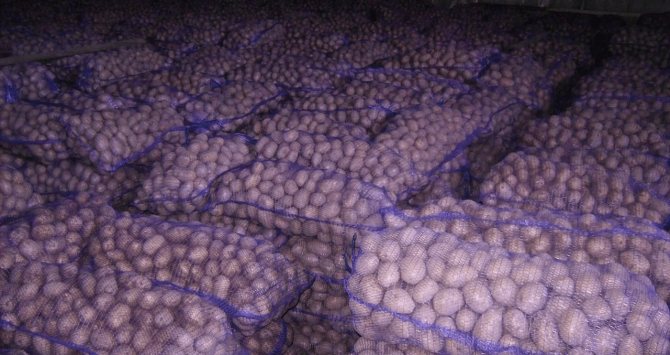

One of the most popular storage options for potatoes is in bags.
To prevent rotting and good air circulation, the layer of potatoes in the boxes should be no more than one and a half meters, it is recommended to store the crop not on the ground, but on stands. Observing these conditions, keep Luck until the next harvest. The taste and appearance of the potatoes are not compromised.
Video: young potatoes Luck
Russian potatoes of the Luck variety: the earliest, the most delicious!
Potatoes of the Luck variety are one of the first to appear on the market every year. Its tubers look attractive and the thin rind allows you to cook with a minimum of waste.
This variety was obtained by Russian breeders as a result of many years of efforts and it is not in vain that it has won recognition and is popular with both farmers and consumers.
Luck is a potato immune to many diseases and pests. It has excellent storage properties, withstands low temperatures. And, most importantly, this is one of the most delicious varieties of potatoes. In this article you will find a description of the variety, get acquainted with its features and characteristics.
Read also: Strawberries: how to grow outdoors, planting and care, breeding
Choosing a site for growing potatoes
The main advantage of this variety is that its plants can grow on soils of different mechanical composition. So the Udach variety can be grown on black soil, sandy loam, sandy soils. This variety, for lack of a better place, can be grown even on clay soils. Only in this case it will be necessary to increase the amount of applied organic fertilizers and more intensively cultivate the soil. In addition, the selected area must have the following parameters:
- The acidity of the soil should be at pH = 5.0.
- The soil surface should be leveled with few perennial weeds.
- Potato plants during cultivation must be protected from the negative influence of the prevailing winds.
- The selected area should be well lit.Therefore, it is necessary to grow the Luck variety at a considerable distance from buildings, fences and other structures that will shade the plants during their growth.
- Groundwater should be no closer than 1 m from the soil surface.
- The best predecessors for this variety are: cabbage, cucumbers, beets and corn.
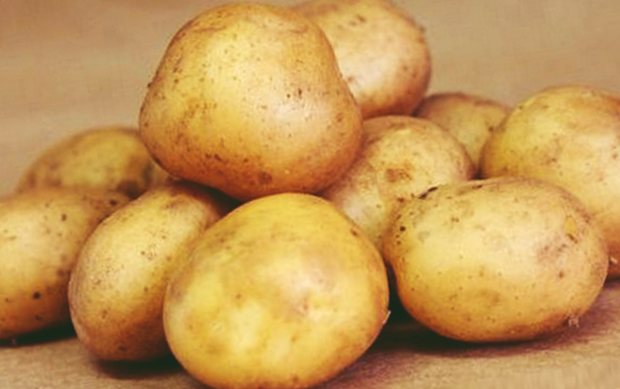

Description of the variety
Thin skin of light cream, beige or yellowish color. The tubers are smooth to the touch. The eyes are small, clearly visible on a light skin. They can be dark brown, grayish or reddish in color.
Color - The light beige color of the tubers may become slightly more intense to light brown. Shape - tubers are round or round-oval, mostly not too elongated. The absence of noticeable irregularities allows you to peel these potatoes quickly and almost without waste.
Starch content - on average, the starch content is from 12% to 14% of the total weight of tubers. The pulp of raw, freshly cut white potatoes. When boiling potatoes, Luck turns yellowish.
The starch content of other varieties of potatoes is shown in the table below:
Tuber mass or size - relatively large potato tubers Luck, however, are rarely gigantic. An average tuber weighs in the range of 120 to 250 g, but smaller tubers are also in demand.
The shrub is of medium height, but very dense, often covered with leaves. The flowers are snow-white. Their petals are noticeably bent. Leaves of intense dark green color, matte.
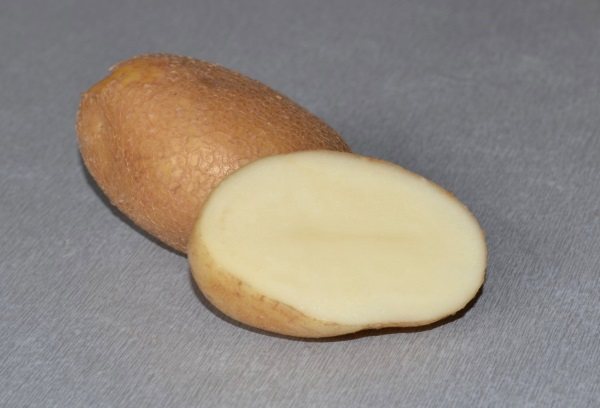

Characteristics
Luck is one of the varieties adapted for a variety of soil types and several climatic zones.
In Russia, the best harvests are taken in the Middle Volga, Central Black Earth and Far Eastern regions. However, the rest of the harvest is not much worse. Potatoes Luck is widely cultivated throughout Russia and in the countries of the ex-USSR: Ukraine, Moldova, and other states.
The harvest depends quite strongly on the climate and favorable weather, to a lesser extent on the soil. We can say that with proper care, each potato bush Luck will give at least one kilogram of tubers. Potato Luck consistently gives high yields.
You can compare the yield of Good luck with other varieties of potatoes in the table below:
The good taste of this variety has been repeatedly confirmed by experts at various levels.
Sufficiently crumbly flesh of potatoes Luck allows you to cook excellent mashed potatoes from it. Fried potatoes keep their shape well, always look appetizing and very tasty.
An important property of this variety: with mechanical damage, the pulp of the tuber does not change its color. A focus of future damage is not formed. Drought tolerant. Potatoes Luck feels good and gives high yields both on dense and sandy soils.
When planting, you should pay attention to what plants grew here last season. The best predecessors of potatoes for dense soils: perennial grasses, legumes, winter crops. If lupines have grown on sandy soil, this will be ideal.
To such diseases as viral or rhizoctonia, the potato variety Luck is unusually resistant. Resistance to late blight is considered relative.
It exhibits moderately high resistance to the next series of diseases.:
- wrinkled mosaic;
- blackleg;
- wet rot;
- common scab.
Read detailed materials about traditional methods and chemicals used to treat plants.
Potato Luck is well stored in winter, frost-resistant and is one of the universally favorite varieties.
We also invite you to get acquainted with other varieties that have a wide variety of ripening periods:
Advantages and disadvantages
Luck potatoes have several advantages over other varieties. It can be planted in areas of 8 regions of the Russian Federation at once.It grows and bears fruit quickly, and it is unpretentious to the soil and does not require a lot of fertilizer and water for the formation of tubers.
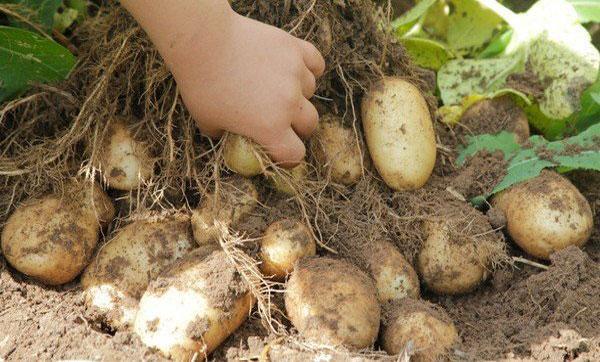

The potato variety Luck also has disadvantages: tubers planted in cold soil develop roots slowly, which is why the harvest is delayed by 2 weeks. Plants of this potato variety do not tolerate the thickening of the plantings - if the bushes are placed too closely in the beds in rainy seasons, the risk of damage to them by late blight and Alternaria increases.
Breeding history
The potato variety "Luck" was bred in the 90s of the last century. The basis of the variety was made up of potatoes "Vilnia" and "Anoka". The breeders set a goal - to achieve the creation of an unpretentious potato variety that gives good yields in different climatic zones with different soils. As practice has shown, agronomists coped with their task perfectly.
Newly baked potatoes "Good luck" have proven themselves in a variety of regions: from the North-Western regions of Russia to the Black Earth Region, from the Volga Region to the Far East. Its main feature is its high adaptability. The yield per hectare is 40-45 tons, even in hot and dry summers.
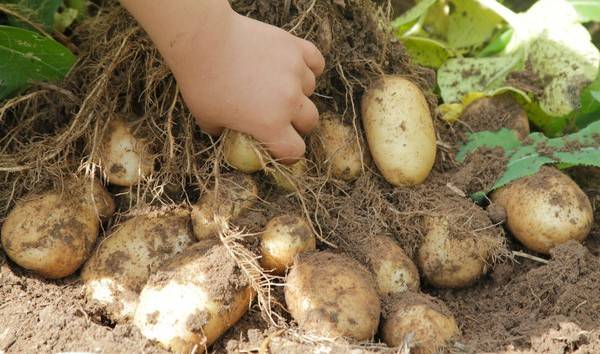

Best dish with this variety
Potatoes of the Luck variety are universal in terms of preparation. With it, you can cook a hearty and tasty dish that you will not be ashamed to serve on weekdays and holidays:
Potatoes with meat in the sleeve
Ingredients:
- Potatoes - 8 pieces of medium size;
- Meat - 400 grams;
- Champignons - 100 grams;
- Tomato - 1 piece;
- Sweet pepper - 1 piece;
- Onions - 1 piece;
- Garlic - 4 cloves;
- Soy sauce - 3 salt spoons;
- A mixture of Italian herbs;
- Pepper mixture;
- Salt to taste;
- Sleeve for baking.
Cooking method:
- Cut the meat into small pieces, divide the mushrooms in half, the onion in half rings, vegetables and herbs - arbitrarily.
- Put the meat in a deep bowl, add prepared foods to it, but do not salt. Mix and marinate for half an hour. Salty meat lovers can add salt, given that the soy sauce that serves as the base of the marinade is quite salty.
- While infusing the meat, cut the potatoes into cubes, add to the meat, stir and leave.
- Tie a knot on one side of the baking sleeve. Stuff the sleeve with potatoes and meat and close it. From the outside, you need to pierce several holes with a toothpick, this will prevent it from bursting.
- Place the sleeve on a baking sheet and bake in the oven for an hour and a half at a temperature of 180 degrees. After removing it from the oven, carefully cut the sleeve and arrange the contents on deep plates, pouring over the juice released during cooking.
Description and characteristics
The plant is characterized by powerful 40-centimeter bushes with thick leaves. Leaf shape with a characteristic dissection, color is bright green. The variety does not bloom for long, but abundantly. Inflorescences are collected in small clusters. The flowers are snow-white in color, with sepals bent downwards.
Potato tubers are round and oval in shape, with a small number of eyes. The color of the tubers ranges from yellowish cream to brownish. The tubers of this variety are characterized by a thin and smooth peel, so there are very few peelings during cooking. In its raw form, the flesh of a potato is white; it turns a little yellow when cooked. This is especially noticeable if, when growing the plant, mineral fertilizers were used: potash and chloride.
The characteristics of the potatoes "Luck" are as follows:
- The duration of the growing season is from 80 to 90 days;
- The mass of 1 tuber is on average 150 g;
- The number of tubers per plant is 10-15;
- The percentage of starch is 12-14%;
- Productivity per hectare (on average) - 42 tons;
- Productivity from 1 bush - 1.7 kg;
- The percentage of marketable products - 88-97;
- The taste is excellent.
The yield of the "Luck" potato is influenced by the weather and agricultural techniques, and the type of soil has no particular effect on the yield.
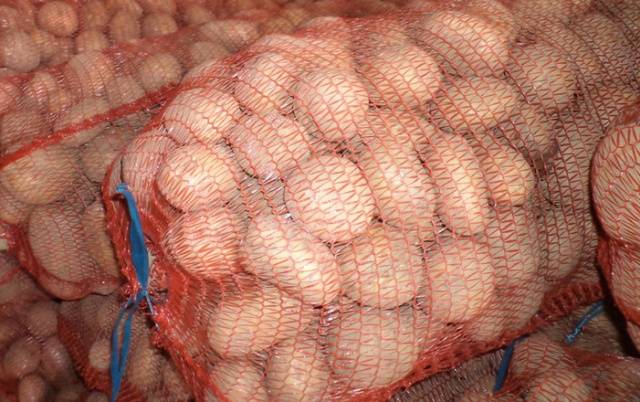

Tillage
To obtain the maximum yield, you need to carry out high-quality and timely soil cultivation. In the course of soil cultivation, it is necessary to thoroughly grind the arable horizon and clear the soil from weeds to the maximum. To achieve the set goals, the following agrotechnical methods of soil cultivation must be carried out:
- After harvesting the predecessor, you need to carefully loosen the soil surface to destroy weeds. The processing depth is 3-4 cm. For this purpose, it can be used as a manual tool (rake, Fokin's flat cutter) and mechanized units (walk-behind tractor, etc.).
- Continuous herbicides such as Hurricane, Volcano and Roundup should be applied 12-14 days after weed regrowth. The application rate of the aforementioned herbicides is 30-50 ml. for 1 are.
- 2-3 days before plowing, organic fertilizers should be scattered evenly over the soil surface. It is best to use rotted manure as organic matter. The manure application rate is 6-7 kg. per 1 m2.
- Plowing is carried out in mid-September to a depth of 20-24 cm. After plowing, all organic fertilizers must be plowed into the soil.
- In early spring, harrowing is necessary to level the soil. To do this, you can use a rake or a walk-behind tractor.
- When weeds appear, weed immediately to a depth of 3-4 cm. During this period, the most important thing is to prevent weeds from rooting.
- Before planting the tubers of the aforementioned variety, weed control and harrowing must be carried out to create a mulching layer on the soil surface.
Benefits
The advantages of the variety, which distinguish it from other selection products, are as follows:
- Immunity to low temperatures. For active germination of tubers, an air temperature of plus 10 degrees is sufficient. Potato sprouts thrive in both cloudy and moderately cool weather. The landing date for the central regions is the end of April. Closer to the north, potatoes are planted in mid-May.
- Fast tying of tubers. About 1.5 months after the emergence of shoots, young potatoes are quite edible. The mass of tubers varies from 60 to 80 g. Young potatoes have a pleasant and delicate taste. The yield from 1 hectare after 2 months of growing season ranges from 20 to 25 tons.
- Disease resistance (potato cancer, rhizoctonia, mosaic, scab). Defeat with viral diseases is very rare.
- Excellent keeping quality. When ripe early, potato tubers are perfectly preserved "from harvest to harvest". It is only important to provide normal storage conditions. At the same time, potatoes do not lose their taste.
- Resistance to mechanical stress. The variety is very well suited for mechanical harvesting and transportation. This is especially important if the potatoes are grown commercially.
- Excellent taste characteristics. The tubers are not watery, they are equally well suited for mashed potatoes, baking and frying. This variety is rightfully considered one of the most delicious.
Read also: Seeds of cucumbers for the greenhouse: self-pollinated, bee-pollinated, how to pollinate yourself, photo, video
Preparation of planting material
For planting the Udacha variety, tubers weighing 60-80 g are selected. As a rule, sorting of the potato crop and the selection of its part for future planting is carried out during the harvesting process, although this can be done in spring. Seed material begins to be prepared 1–1.5 months before planting.
The first stage is the culling of substandard and diseased tubers. Next, vernalization is carried out by placing the potatoes in one layer in the light and keeping them for several days until they turn green. Solanine is produced in tubers under the influence of light, which increases their resistance to disease.
If it was not possible to collect enough medium-sized tubers for planting, after vernalization, large root crops can be cut into shares, leaving 3-4 eyes in each part.
This is followed by the germination of tubers, which allows you to get a harvest 2-3 weeks earlier, and here options are possible:
- The easiest and most common way is to place the potatoes in low boxes and place them in a warm place.
- The second option allows you to combine vernalization and germination in the light, but it requires, in addition to heat and light, also areas to sprinkle potatoes.
- The most labor-intensive, but also the most effective method is wet germination in the substrate. Sawdust or peat is poured into flat boxes, potatoes are planted and regularly watered, maintaining constant humidity. In this case, the formation of roots occurs in the tubers, after planting they demonstrate a faster germination capacity, and, therefore, the harvest will be earlier.
It is always desirable to harvest as early as possible, albeit in small quantities. Therefore, wet germination can be applied to a small number of tubers and planted separately.
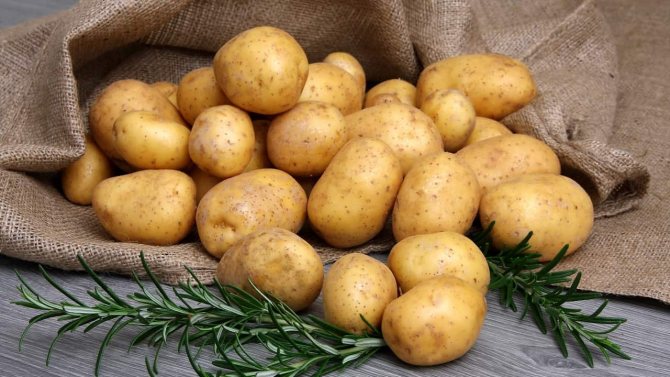

How to grow "Luck"
The main thing that distinguishes the Luck potato from other hybrids and varieties is its unpretentiousness in terms of soils. It grows not only on chernozems, but also on clay soils, loam and sandy loam soils. But potatoes also require a certain amount of care. For example, the beds need to be prepared in the fall. Potatoes grow best after melons, cabbage and cucumbers. If you plant tubers in the same place for a long time, the risk of diseases increases. In addition, the variety is degenerating.
Tubers grow best in soft soil. Therefore, the site intended for planting the variety must be dug in advance to a depth of 2 cm. At the same time, the soil is fertilized with compost or humus, at the rate of 40 to 45 buckets per one hundred square meters.
For clay soils, it is most convenient to plant tubers in pre-formed ridges 15-20 cm high, with a distance between the ridges of 70 cm. With this planting, the soil will warm up better. Its breathability will also increase. For chernozems, planting with "ridges" is not necessary, since the soil warms up well without it.
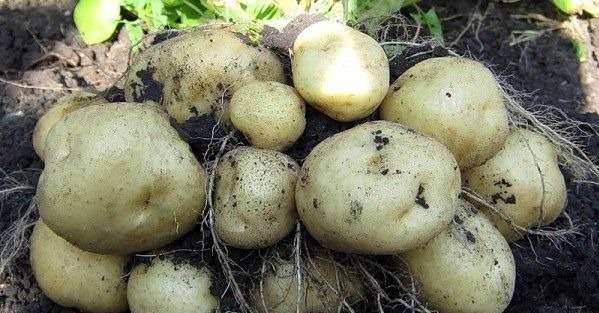

The optimum weight of the planting tuber of the "Udacha" variety is from 50 to 80 g. Large potatoes are characteristic of the variety, therefore, each of the tubers is cut so that three or four eyes remain on each part.
For planting, you need to take only healthy potatoes. Tubers with visible signs of disease should be discarded, as there is a risk of getting infected plants.
It is recommended to treat the tubers with wood ash. Ash disinfects and plays the role of potash fertilizer for planting material. Then the potatoes must be placed in one layer in the germination box. The optimum temperature for germination is 16-18 degrees.
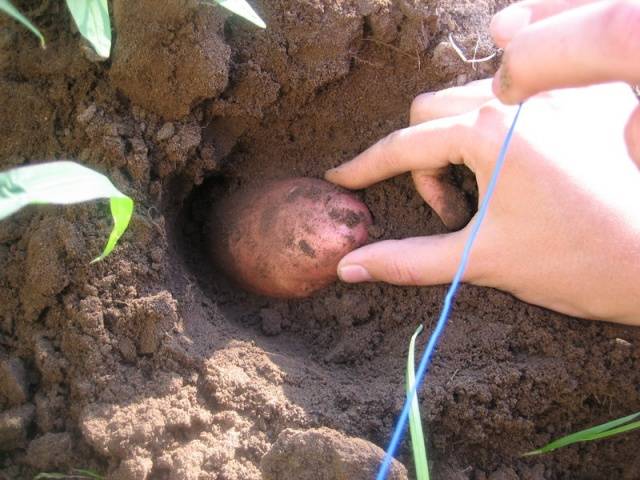

The optimal planting time for the Udacha variety, depending on the region, is from the second half of April to mid-May. The distance between the holes within a row is at least 20 cm. The interval between rows is from 30 to 40 cm. To feed the plant, you need to mix compost and wood ash in equal proportions. More feeding is not needed, it is better to feed the bushes during the first hilling.
After the emergence of seedlings, it is advisable to huddle them in order to protect them from possible night frosts. Further care of the plants consists in weeding and loosening the soil. This improves the air supply to the root system. It is best to loosen the soil after the rain before it has dried out.
Potatoes "Luck" loves nitrogen fertilizers, but they need to be fed with great care so that they do not get on the leaves and stems of the plant. In terms of watering, the variety is undemanding, therefore, abundant watering is needed only in severe drought and hot weather.
Culture care
Even with positive concurrences of all circumstances, such as good planting material, nutritious soil, adequate lighting and a temperate climate, potato harvest will not have an effect without the care of the gardener. Culture care consists of the following works:
- hilling;
- loosening;
- watering;
- top dressing;
- weed removal;
- disease and pest control.
Hilling
When the bushes reach a height of 12 cm, they need to be earthed and watered immediately. The hilling process increases the volume of soil in which new tubers develop. Since they are placed shallow (15 cm), then willy-nilly root crops receive the potential to expand their boundaries. Thus, the potatoes are freely placed underground and grow in size.
Too dry, burnt soil is not suitable for hilling. This will only harm the plants, scorch the stems or even kill them. If you did not have time to huddle the seedlings in time, then just loosen the beds and water.
When hilling, the number of stems, leaves and roots increases, the plant becomes stronger. Hilling is repeated three times. The first time you need to sprinkle the plant so that the top of 3-4 centimeters remains on the surface. The last time they spud is when the tops become thick and close over the rows. There is also an unconventional way of hilling - the so-called fan-shaped, with the help of siderates.
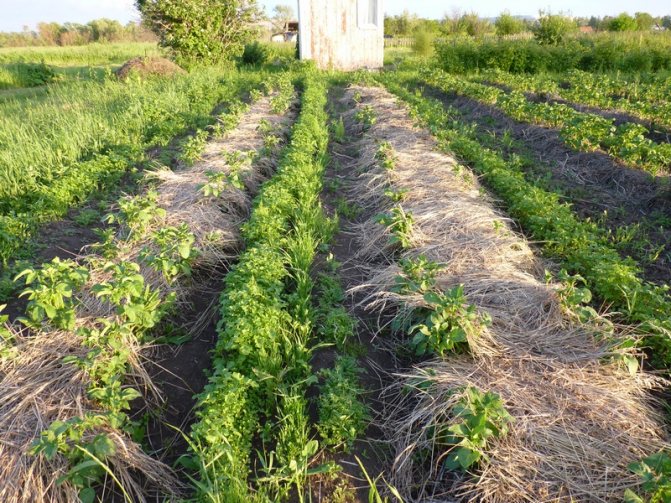

The fan-shaped hilling of potatoes with green manure will protect the soil from drying out and from weeds at the same time
Watering
To grow 1 kilogram of potatoes, the plant must pass up to 100 liters of water through itself in the form of natural and artificial irrigation. Since our Luck culture is drought-resistant, imagine how lucky the gardeners are. But that doesn't mean she doesn't need water. Yes, the potatoes will not die from the heat. But in order for the stems to develop and the roots to grow, 3-4 waterings should be carried out over the summer, delivering 10-12 liters of water to each bush at a time.
For the first time, potatoes are irrigated 5–6 days after planting. In the future, this must be done strictly in the evenings. Potatoes should not be watered either in the morning or even more so during the day, since the tubers in the ground will simply cook under the hot rays of the sun. If the bushes are spud, then it is advisable to water them with a hose.
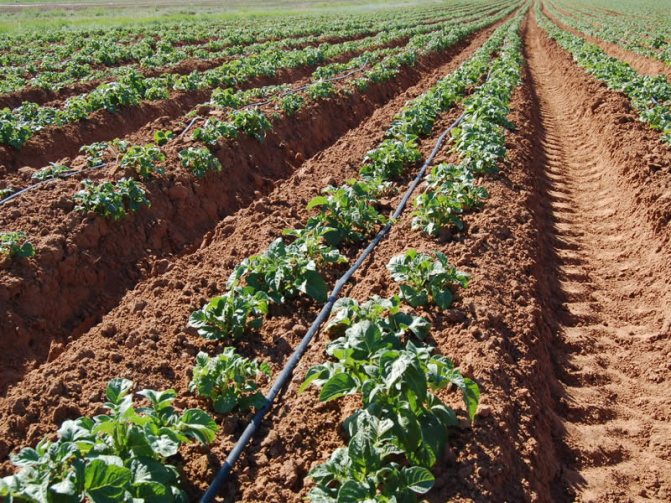

Hilled potatoes can be watered with a hose
And if not yet, then water must be poured from a watering can under each bush.
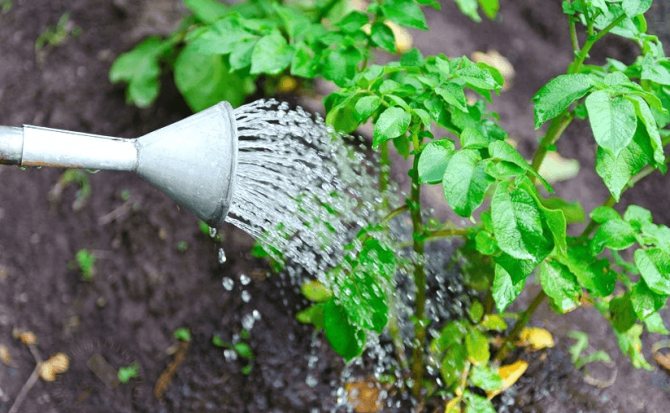

It is better to water uncooked potatoes from a watering can
To obtain a bountiful harvest, potatoes need to be provided with top dressing. It is provided to plants in the form of watering.
Top dressing potatoes - table
| Agricultural activity | Process |
| 1st feeding | Choose one thing for watering:
|
| 2nd feeding | When flower buds appear, feed each bush with 0.5 liters of water solution. Use one of two recipes:
|
| 3rd feeding | When the flowers bloom, water each bush with 0.5 liters of a solution prepared according to the recipe: for 10 liters of water, 1 cup of mullein and 2 tbsp. tablespoons of superphosphate. |
Weed removal
Removing weeds is one of the constant concerns of gardeners. The grass shades the tops, making them weak. Deepening rhizomes into the soil, it does not allow root crops to develop in full force. Weeds need to be pulled out by hand or with the help of a hoe, cutting the roots, weed out. At the same time, an additional effect is obtained - soil loosening.
Use the perfect moment after the rain to manually remove the weeds. Their roots are very easy to extract from moist (but not wet) soil.
You will have to remove the weeds manually until the tops are closed over the rows. Then not weeds, but potatoes will begin to prevail in the beds and "clog" the weeds with green mass. From now on, you can forget about weeds.
Mulching is an excellent way to control weeds. Many gardeners have a variety of waste on the farm that can serve this purpose. What used to be garbage can become mulch material. At the same time, the issue of its disposal is being resolved. Everything is good - dry leaves, sawdust, straw, grass, etc.
Pest and disease control
The variety has good disease resistance, but individual diseases should be feared.
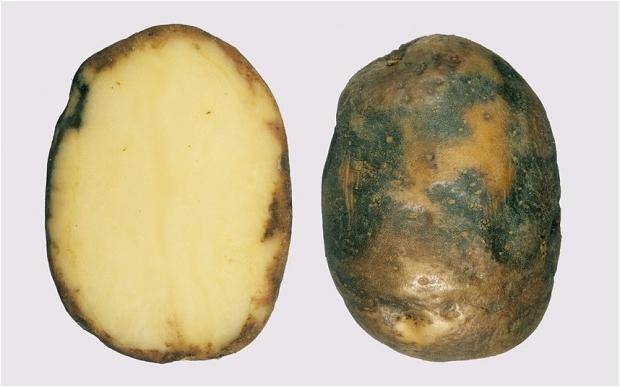

It is manifested by the appearance of dark gray spots on the leaves and stems. The disease affects the entire plant, down to the tubers. They start to rot.
Prophylaxis against late blight can be:
- Compliance with crop rotation.
- Weeding and weeding.
Before the flowers appear, the seedlings are treated with Ridomil (25 g per 10-liter bucket of water). After the flowers appear, use the Hom product (for a 10-liter bucket of 30 g). If infected plants are found, they must be immediately dug up and destroyed.
Stem nematode
A plant affected by a nematode is characterized by increased bushiness. The leaves are colored paler than is typical for the variety. Spots appear on the tubers. Prevention: adding wood ash when planting. If infected plants are found, they must be dug up and destroyed.
